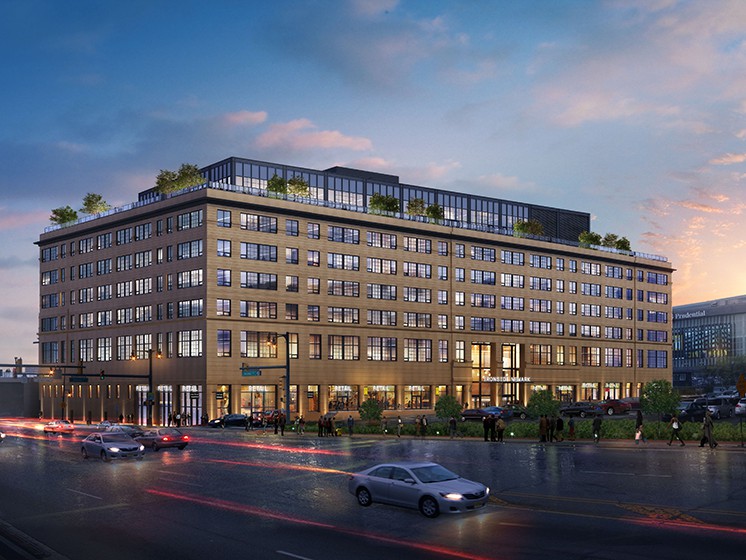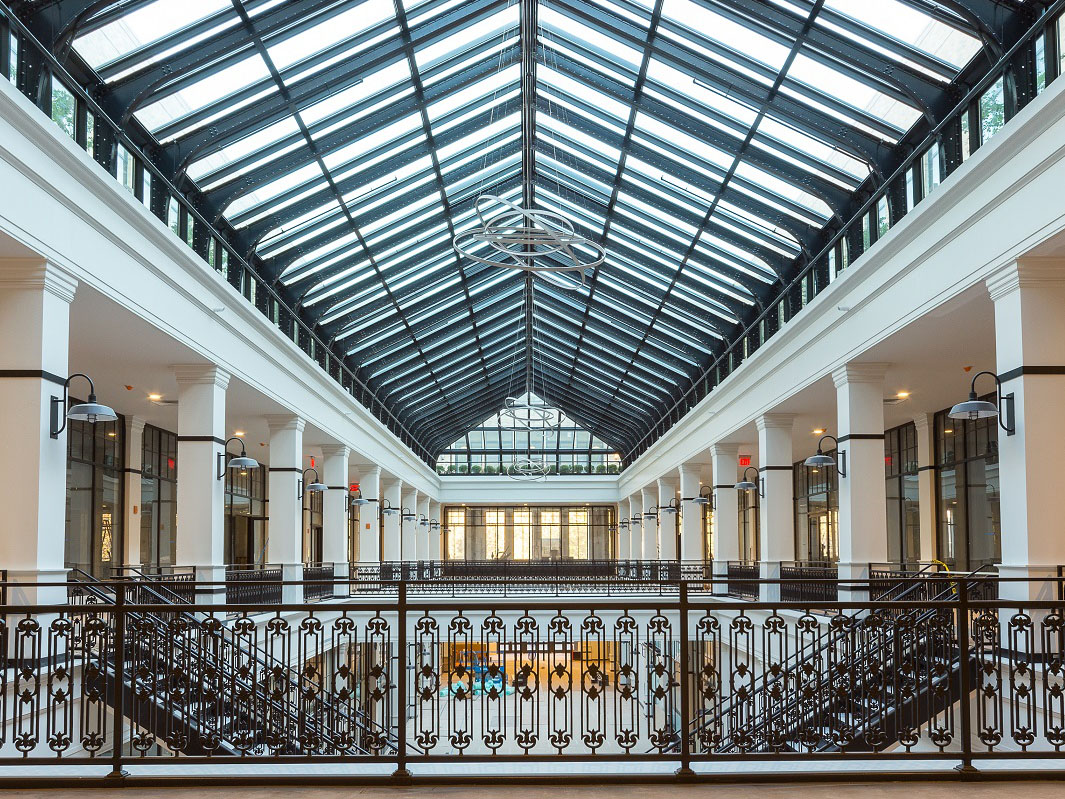Newark Dreams to Join Ranks of Destination Cities
As the Garden State’s largest city is looking to get into the revitalization game, cranes are returning to the skyline, with $1 billion of projects underway and another $4 billion in the pipeline.
by Paul Fiorilla
Urban redevelopment is a familiar story in metros across the country. In the New York City metropolitan area alone, submarkets in parts of Brooklyn, the Bronx, Jersey City and Hoboken (just to name a few) are many years into facelifts that encompass thousands of new apartment units mixed with office, retail and entertainment uses that create a live-work-play environment.
Now Newark, N.J., wants to get into the revitalization game. Newark is the Garden State’s largest city, but it has struggled in recent decades to attract business and residents. The city’s population, at 480,000 at its peak before violence in the 1960s led to suburban flight, has dwindled to 280,000. Much of the commercial real estate in the city has aged poorly, and office vacancies reached 24 percent in 2013, according to JLL.
Today, cranes are returning to the Newark skyline, with $1 billion of projects underway and another $4 billion in the pipeline. Public-private partnerships are in the process of implementing plans to create a live-work-play environment that will attract residents and business. Those plans encompass 7,000 apartment units, waterfront parks, entertainment, office and retail.
Newark’s pitch is simple: The city is a train hub with a short ride to Manhattan; it has its own downtown office market led by major corporations such as Prudential Insurance; it has an educated workforce with 60,000 students enrolled in city colleges and universities; growing access to entertainment and retail; and —maybe most importantly—it remains much more affordable than peer cities such as Jersey City and Hoboken.
For real estate investors, the city’s late entry into the revitalization game means land and building prices have not skyrocketed, creating the opportunity for value-add deals, said Carmelo Garcia, executive vice president and chief real estate officer for the Newark Community Economic Development Corporation, which is overseeing the plan with city officials and private developers.
“The timing is right,” Garcia says. “You put everything together and there is a perfect recipe for success. Newark is destined to be the next destination city.”
Prudential leads the way
The revitalization was set in motion in 2011 when Prudential, which has been headquartered in Newark for more than a century, began planning a new headquarters. The 740,000 square foot, 20-story building on Broad Street, which cost $444 million and was funded in part with tax incentives, opened in 2015. Prudential’s commitment to stay in the city was a signal to other companies and helped provide the impetus for ambitious plans to redevelop the downtown area.
Newark has individual components that sound good on paper. More than 50,000 people work in its office buildings. It is a transportation hub that includes a light rail to other cities in the area, Penn Station, which is used by Amtrak, NJ Transit at the PATH trains to the city, and Newark International Airport, one of the busiest in the country. Colleges include the highly regarded New Jersey Institute of Technology, Rutgers University, Seton Hall Law School and University of Medicine & Dentistry. The city boasts the NJ Performing Arts Center, Prudential Center, which is home to the NJ Devils National Hockey League franchise, and the Ironbound neighborhood that is famous for its Spanish and Portuguese restaurants.
However, those disparate elements were not connected, and concerns about aesthetics and crime keep away those who would live or visit. Realizing that development is more than putting up new buildings, the comprehensive plan calls for the city to build near Penn Station a park called Mulberry Commons, a 17-acre waterfront park overseeing the Passaic River, a pedestrian walkway to provide access to Ironbound from Penn Station, and entertainment including a bowling alley, cinema, bars and restaurants. Other plans include improvements to the city’s port and a $1.8 billion renovation to Penn Station. The idea is to compel those who work in the city to live there, as well as to attract commuters to Manhattan.
Apartment development to pick up
With weak demand, apartment development has lagged, and only about 1,000 units have come online in the last four years, according to Yardi Matrix. However, that seems set to change, with about 700 units set to be completed in the next year and another 6,000 units in some stage of development, per Yardi Matrix.
Newark’s affordability will be a selling point. Rents in the city average slightly less than $1,200 per month as of mid-year 2017, topping out at $1,400 in the Central submarket. That’s much less than other urban areas, such as Jersey City, where rents have increased nearly 50 percent since 2013 and average nearly $2,200 per month (Matrix). Or Hoboken, where rents average $3,400 per month.
The downtown is seeing a number of major redevelopment projects. One is the renovation of the 115-year-old Hahne & Co. department store, which closed in 1987. The building was re-opened earlier this year with 160 apartments, 65 of them affordable units, with rents that average $2,260 per month, ranging from $1,700 for a studio to nearly $5,000 for a penthouse three-bedroom apartment. The building also includes space for shops, a restaurant and bank, and the city’s first Whole Foods supermarket.
Hahne’s builder, L&M Development Partners of Larchmont, N.Y., is also redeveloping the former New Jersey Bell Headquarters building at 540 Broad Street into a 265-unit 20-story apartment complex. The property was built in 1929. Prudential is a partner in the deal.
Office projects underway include Ironside Newark, located at the corner of Edison Place and McCarter Highway (Route 21), which is the first speculative office development in the city in many years. The seven-story, 456,000-square foot property will encompass two floors of retail and five stories of offices. It is being developed for $80 million by Newark-based Edison Properties.
A project in the planning stages involves the redevelopment of the stadium used by the defunct Newark Bears minor league baseball team. The site, located near the Broad Street train station, Rutgers and NJIT, will encompass 2,000 apartments and 400,000 square feet of office space. The 2.3 million-square foot project, developed by Lotus Equity Group, will also contain retail and park space.
Early stages
Newark’s redevelopment is in the early stages and it remains to be seen whether the city will appeal to enough businesses and residents to become another Jersey City. However, the development that has taken place and the plans for the next few years has created a new buzz surrounding a once-wounded city. “You can see the vibrancy out there and it’s impressive,” said Jose Cruz, senior managing director at HFF, speaking on a panel at the recent Third Annual Newark CRE Summit.









You must be logged in to post a comment.